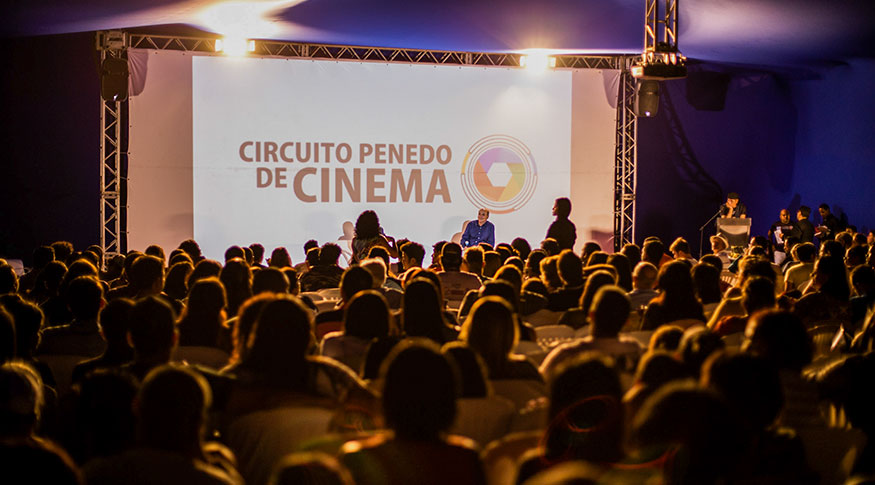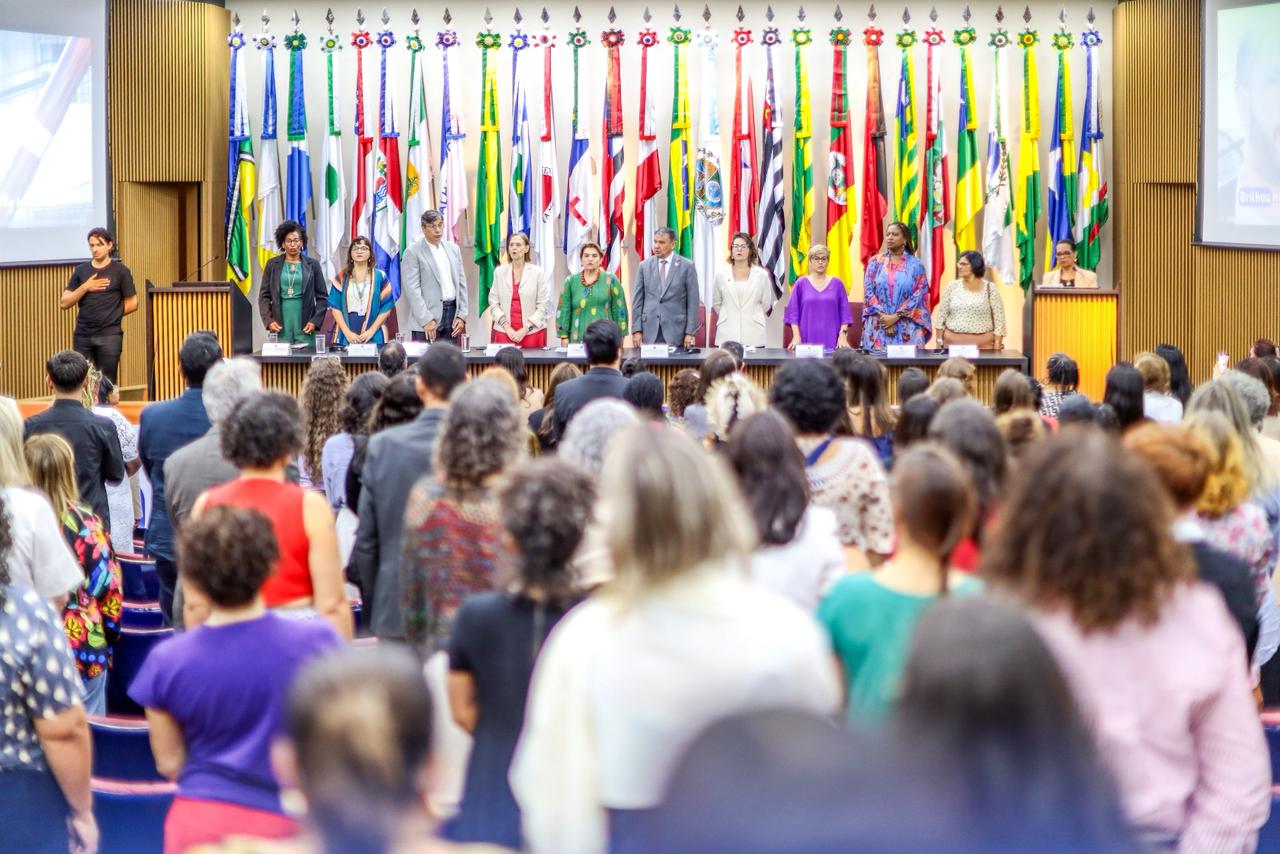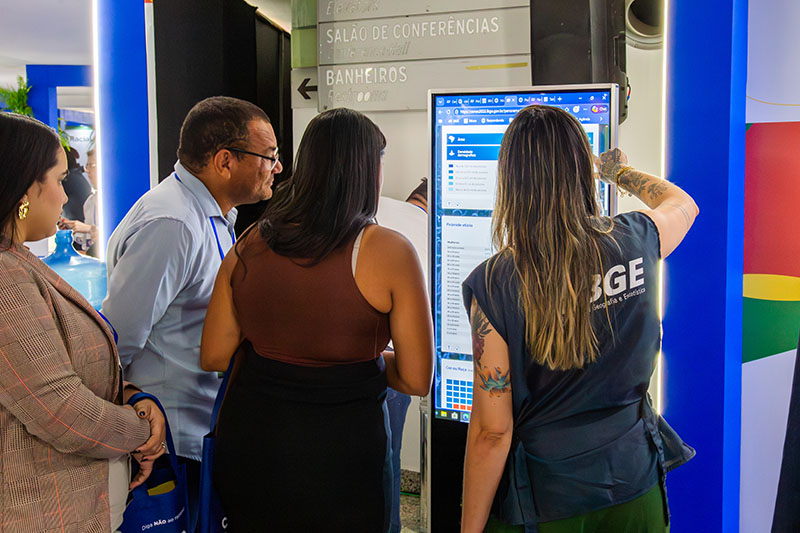Revista Retratos
Changes in movie theaters have consequences inside and outside the screening room
January 22, 2019 03h00 PM | Last Updated: January 25, 2019 12h35 PM

Since the cinematograph was invented by the Lumiére brothers, in 1895, the place we call "movie theater" has been put to test a number of times. As a means of communication for the masses and the result of collective work, the movie theater was once looked down on by some segments of society that criticized its simple language and presumed absence of artistical content. Throughout the years, the "seventh art" has updated the way it relates to the audience and presents its production, inside and outside screening rooms.
If once the concept of movies was limited to full-length movies, shot on film, and that known process of production, the contemporary scenario has changed that definition, as put by Simone do Vale, PhD in Communication and Culture from the Darcy Ribeiro Cinema School: “now that everything is in bits, everything is digital, there is no longer a big difference between the origin and the form of movie theater.” Despite those changes, movie production is still marked by industrial processes that do not reduce its power as art: “The cinema has different vocations, it is not focued on authorship or on box offices. Entertainment is not a sin, it does not disregard art”.
That discussion may remain, but technological evolution gives rise to more problematization. Simone says that although digital platforms, which provide streaming services, are very populalar, screening room are still a reference for the movie industry: “watching a film from the Internet means that is not cinema, because there is no silver screen or that dark room with an audience. Being in that room is what the cinema experience is about".
Before movies reached digital platforms, screening rooms had undergone some changes. In the past was more viable, in economic terms, to have a projector for each room. That was optimized as multiplex movie theaters made it possible to have a single appliance projecting films in more than one room. According to data from the Brazilian Film Agency (Ancine), the country had 3,223 screening roooms, almost all of which were located in shopping malls. The professor believes the decreasing number of movie theaters in cities is a global tendency related to real estate speculation and to the crises affecting film industry throughought the years. A resident of Niterói (RJ), professor Simone do VAle still recalls the time when “we used to go walking down streets, for example, Coronel Moreira César, parallel to Icaraí beach, where there was a move theather very quarter”.
Fábio Iorio, professor of Cultural Journalism at the University of the State of Rio de Janeiro (Uerj), speaks in favor of movie theater as he considers that experince different from others, due to time and space, even though screening rooms are placed in consumption areas: “to see a film now you have to spend more money, which makes that a big event. That is watching a movie in a shopping center is more appealing, because people go there for a number of reasons, not only because of the movie”.
In São Paulo, trends and traditions
The capital of São Paulo gathers most screening rooms among all Brazilian capitals, a total 347, being 87.6% of them in shopping malls, according to Ancine. That is a sign of times, a movie theater located in an open area in Itaim Bibi has three digital rooms, spacious and reclinable seats, with more space separating them, fewer seats per room and a a retractable tray for treats. The snack bar serves flavored popocorn, beer and ice cream. “The public is into comfort, luxury and exclusive services. Also, its is not unusual for them to come to tohe movies and then have dinner out”, says the marketing manager of a chain of theaters, Patricia Cotta.
The change in the format of transmission was followed by a new dynamics in the reception of the public and the motivation to go watch a film. The extra services provided by the so-called VIP screening rooms and the prospect of fun are side-by-side with the plot of the film itself. “We have ssen what the French saw in 1895, 1896, the attraction movie theater [aimed at surprising the spectator], always present in history”, says Simone, who is optimistic about the new experience, such as vibrating seats and the exploration of senses with elements such as water, smell, wind and light: “someone who cannot see or hear can experience the film by means of thise resources. The most important is to keep alive the habit of going to the movies.”.
Options for a still limited access
In order to entertain oneself or to stimulate thought, ging to the movies is an experience available in only 10.4% of the municipalities in Brazil, according to the 2014 Supplement on Culture of the Profile of Brazilian Municipalities (Munic), an IBGE survey whose new edition was in the field in 2018. The survey manager, Vânia Pacheco, says the questionnaire is answered by the local head of cultural policies, and that it had to be adapted because movie theaters, most of the times, are not municipal: “de uns tempos para cá, um estabelecimento passou a ter quatro, cinco salas. The public manager does not necessarily know about that quantity, so we asked them the main forms of funding and development”.
According to the IBGE survey, a total 22.4% of the 5,570 municipalities in the country directly promoted or supported movie festivals or shows, for example, Penedo (AL). Since 2016, the city houses the Penedo Cinema Circuit, which counts on gsupport from the government and from other partners to promte a festival ffor Brazilian films, a university festival, a regonal meeting and an environmental exhibition. The list of Penedo residents is a look at the past, mainly of years 1975 to 1982, when the municipality, with 37,442 at the time, according to the 1980 Census, was home of eight editions of the Brazilian Film Festival: “Cacá Diegues launched ‘Bye, Bye, Brazil’ here. It was not in a big capital, but in a city inside Alagoas, one tbig enough to receive 1,000 spectators”, says the coordinator of the event, Sérgio Onofre.
When he and his staff got there, in 2006, Penedo had only one facility Theatro Sete de Setembro Theater, which gave him motivation to think of alternatives: “we stsrted with a film society in 2008, on the street. Then we had six editions of the university film festival. In 2016, already experienced, we called back the old Brazilian Film Festival”. Besides allowing the return of the population to screening rooms, Sérgio has a more ambitious project: “we also work with professional qualification in a lab-school, with production and research, and the exhibition of films, which is the experience of the final product. We expect to open an undergraduate program to complete the chain that cinema creates”.
See more on Retratos Maganize no15.




















